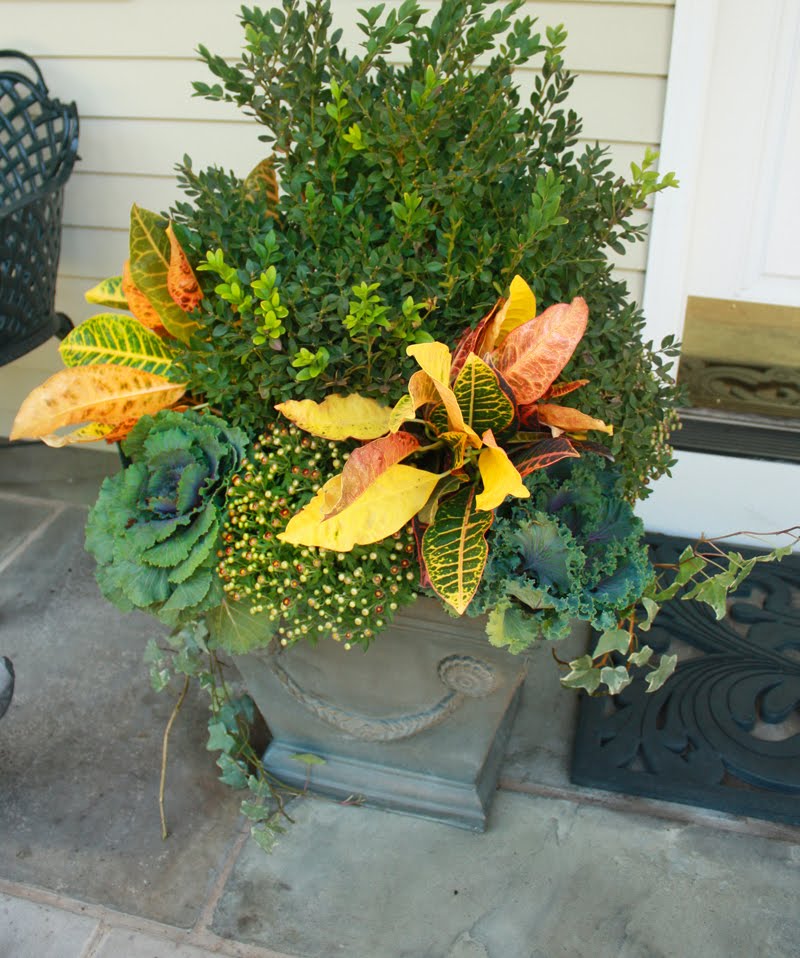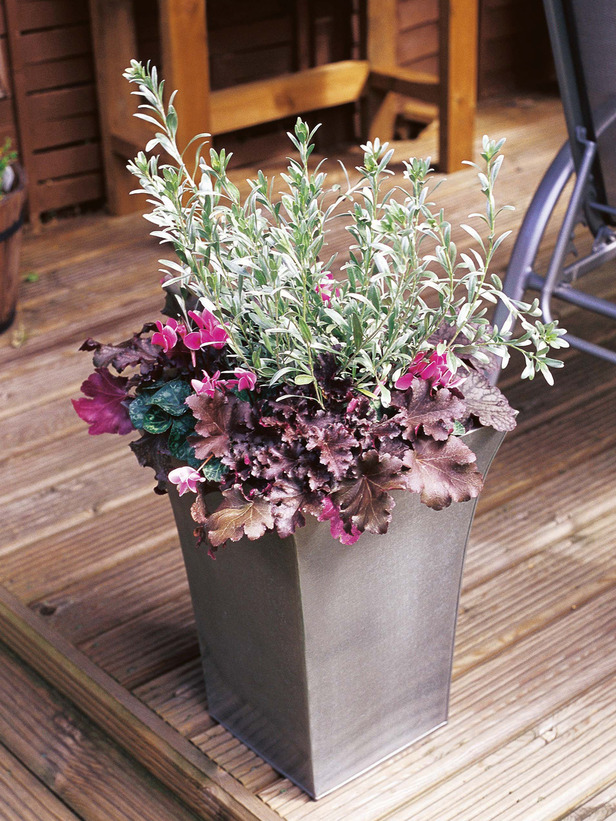During the cold months of January and February, when the setting is bleak and the sky is gray, winter containers can cheer up the soul and provide a colorful punch to the landscape. Many gardeners give up on their potted creations in the fall, but that can be a horrible waste because winter is when color and interest are most vital.
Creating a winter design is not difficult. The general rule for container-plant survival through the winter is to use plants hardy to at least two zones colder than your USDA Hardiness Zone; this, however, is not always a steadfast rule. Many trees, shrubs, and perennials that are hardy in your zone will live and even thrive in containers through all four seasons. In this case, a frostproof pot with a drainage hole is important. Cement pots are the best weather-resistant containers to use.
Assemble your designs early enough that the plants have time to acclimate to their new tall concrete pots before the hard freeze. Also, winter containers usually need to be checked only monthly for water to make sure they haven’t dried out; when the soil eventually becomes frozen solid, watering is no longer necessary. Apply an antidesiccant such as Wilt-Pruf to broad-leaved evergreens and to branches of cut greens to protect against drying winter winds. When it comes to design, I like to use a mix of live plants, cut branches, colorful berries, and interesting evergreen foliage to dress up the pots for maximum seasonal appeal.
The vibrant colors of this tall concrete pot planting set it apart. Redtwig dogwood’s scarlet stems are strikingly prominent and add a structural component to the container. To highlight them, it helps to have a solid evergreen background so that the thin branches stand out. Surrounding the base of the dogwood are two small Japanese pieris, whose glossy, dark green leaves provide bulk and texture to the design. The lemon yellow foliage of ‘Golden Sword’ yucca complements the dogwood. Two perennials, ‘Bressingham Ruby’ bergenia and ‘Caramel’ heuchera, are tucked around the bottom of the pot to add an additional punch of color. The ‘Ivory Tower’ Japanese hollies on each side of the dogwood add more color interest with their creamy yellow berries. Branches of gold-thread sawara echo the yellow tones from the holly berries. The result is a colorful explosion dynamic enough to brighten the grayest of winter days.
Many people feel that winter containers are a waste of time because they can’t be appreciated when covered in snow or ice. Using strong architectural forms in your containers will allow them to stand out even when encased in snow. Hardy ‘Green Mountain’ boxwood has this kind of profile. Its clean, simple lines stand out against almost any backdrop, especially when dusted with snow. To highlight the dark foliage of the boxwood, I pair it with the slender leaves of silver-variegated Japanese sedge. The soft green and white mottled foliage of ‘Snow Angel’ heuchera gives mass to the arrangement, and ‘Angelina’ sedum is wedged in for its cascading tendency. The yellow pansies may not survive throughout the winter but are wonderful for a short time. The strong form of this design will make it a showstopper throughout winter.
Although the hues featured in this tall concrete pot are not necessarily traditional, they are still dramatic and seasonally appropriate. The strong vertical form of the evergreen beaked yucca makes it a perfect focal point for a design. The dark foliage of a ‘Plum Pudding’ heuchera provides contrasting color at the base of the combination, and steely blue cut stems of smooth cypress pick up the silvery hues of the shimmering hairs along the edges of the yucca. With their opposing shape and color, orange winterberry branches also accentuate the sculptural yucca leaves. These fruits usually form earlier than red winterberry, so the berries do not last as long on the branch, but the color is worth the effort. The thick vertical leaves of the yucca and unexpected hues of this design stand out in winter, despite the absence of traditional red and green.


